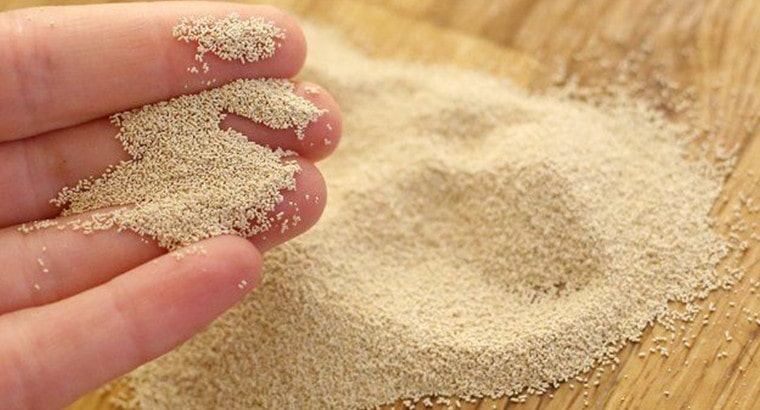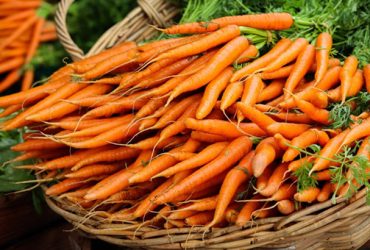Baking is more than just a means to put food on the table. Even beyond a career, it’s a hobby for some and might even be a passion for others. If you’ve just recently come about baking as a pastime, you probably have a lot of questions about yeast. Like what is yeast? Why do you need it? And how much yeast is in a packet?
Yeast is an essential component of breadmaking. Without yeast, the dough remains dough. And as for how much you get in a packet, well, that depends. As you’re about to find out.
What is Yeast?

Image source: Pinterest
Before you go out to purchase yeast, you should have a basic idea of what it is and how much yeast is in a packet.
Yeast is a type of single cell-fungi that exists pretty much everywhere. You can find it on plant surfaces, soil, fruits, and even on the surface of your skin and intestinal tracts in small quantities.
Yeast-rich foods supply a tidy sum of proteins and B-vitamins. They also help you absorb nutrients better, thus improving your digestive system and, in the right amount, the immune system too.
If you were looking to harvest yeast yourself, there are a number of recipes you can turn to. Some of these involve using potato water, some use fruits, and some go the easiest route of only flour and water.
Why Do You Need Yeast?
Yeast is one of the main leavening agents used in fermentation processes. You cannot make bread without it. What is a leavener? A leavener is the term used for anything that produces gas to help baked goods rise. Baking soda, for example, is also a leavening agent.
But you cannot use baking soda to make bread because while it produces abundant carbon dioxide gas, the lifespan of the chemical reaction is too short for the dough to rise completely. Yeast and baking powder, on the other hand, provide a more extended version of the chemical reaction needed to make the dough rise.
How Does Yeast Work?
Yeast, as mentioned earlier, is made up of small single-cell organisms but they’re in a dormant, or what’s referred to as a dry, state when you buy it. Once you mix it with any liquid to hydrate the cells, they begin respirating.
So, in a way, baking involves bringing yeast back to life. Yeast added to dough breaks down starch molecules into simple sugar. They then consume sugar and start emitting carbon dioxide gas through respiration, which raises goods during baking.
If you ever cut a loaf of bread and zoom in, you’ll notice it’s porous. That’s where the carbon dioxide was trapped before you cut it open. Yeast helps to fluffen bread and give it its unique flavor.
4 Different Types of Yeast
You’ll probably find a variety of yeasts at your local grocery market. Some of them go into making beers and wines while others in bread.
But if you want to get technical about it, there are about 1500 species of yeast fungi. Most yeasts are a part of the phylum Ascomycota, and a few of them, phylum Basidiomycota.
Phylums, if you’re confused about what that means, are levels of taxonomic classification used in botany. Basically, it’s a system to help botanists categorize fungi.
Here are the 4 major types of yeast you need to know about and what they’re used for. Different recipes call for different kinds of yeast.
1. Active Dry Yeast
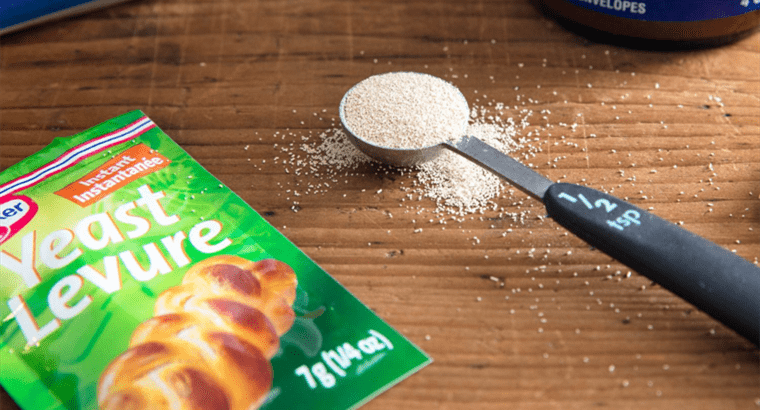
Image source: Pinterest
Active dry yeast is a form of baker’s yeast used in home and commercial baking. It is partially dehydrated to render the yeast cells dormant and grounded into granules or powder. Active dry yeast can be stored at room temperature for several months, but you should check the expiration date before purchasing it.
Make sure you store it away from any heat sources because yeast cells start to die at temperatures beyond 120 ℉. Active dry yeast is best suited for bread recipes because the fermentation process lasts longer.
2. Instant Yeast
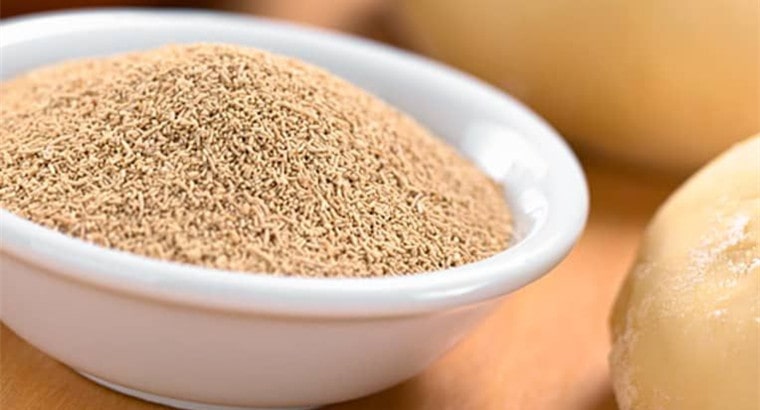
Image source: Pinterest
Also referred to as rapid rise yeast, instant yeast works faster than active dry yeast. It can shorten the baking duration by up to 50%, hence the names “instant” and “rapid rise.” The yeast is powdered into miniscule granules that increase the surface area to allow for faster rehydration.
Instant yeast is more sought after for bread and has sometimes been labeled as the “bread machine yeast” for providing consistent results. This is the most active form of yeast commercially available, and you don’t have to dissolve it in water before using it.
3. Fresh Yeast

Image source: Pinterest
Also called cake yeast and compressed yeast, fresh yeast is yeast that hasn’t been dehydrated. It’s packaged into large blocks or tiny cubes and stored in refrigerators to keep it from fermenting. The texture of fresh yeast is somewhere between paste and clay.
Because of the high moisture content, fresh yeast has a much lower shelf life and needs to be refrigerated. If it is allowed to gain any more moisture, mold might start to form within a week, making it unsafe for consumption.
Fresh yeast is typically used by professional bakeries to bake sweet recipes like cake, doughnuts, and other baked items that crumble.
4. Nutritional Yeast

Image source: Pinterest
Also referred to as brewer’s yeast, nutritional yeast is derived from Saccharomyces Cerevisiae, which is a culture of live yeast used in biotechnology. However, the yeast undergoes a deactivation process by exposure to strong heat. This essentially kills the yeast cells, rendering it ineffective for raising baked goods.
So what is it used for then? It’s often used as a seasoning to add both nutrition and flavor to foods like vegetables, rice, cheese, and much more. Due to its nutty, cheesy flavor, this form of yeast is often consumed as an alternative to cheese by those following a vegan diet.
Nutritional yeast is an excellent source of protein, vitamin B, and other minerals, but only if you purchase the fortified variety.
How Much Yeast Is in a Packet?
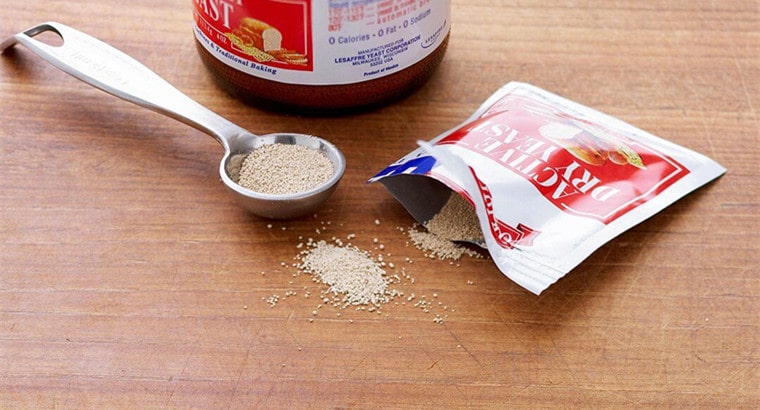
Image source: Pinterest
Packet is an ambiguous term. How much yeast you get varies with the type you’re buying, the brand, and the quantity because they’re usually available in many size denominations.
Generally speaking, in North America, you can get yeast in packets of 2.25 tsp, 2.5 tsp, 1 tbsp, or even 7g, 8g, and 10g.
Active dry yeast tends to come in ¼ oz packets or a 4 oz jar if you’re looking to stock up for regular use. Instant yeast might come in smaller packets because the granules are finer, whereas fresh yeast is sold in blocks of various sizes.
To find out how much yeast you need, simply look up the recipe you’re about to make and how much yeast it requires. Multiply that by either how much you’re going to bake or how often in the next month or so. That should give you a fair idea of the quantity you need to purchase, so that it doesn’t expire before you’ve used it all.
How To Store Yeast?
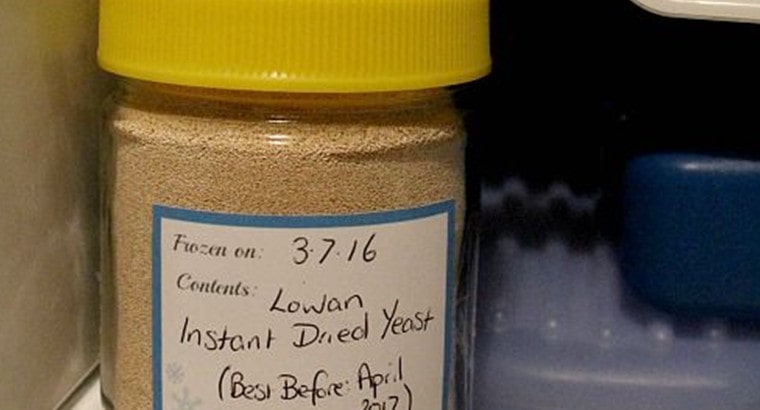
Image source: Pinterest
If you’ve purchased active dry, instant, or nutritional yeast, store them in airtight containers or plastic wrap them in the refrigerator. The less warmth the yeast is exposed to, the longer its shelf life.
If you freeze it, it might give you a shelf life of up to 2 years. Although it’s probably best if you used it before the expiration date mentioned on the jar or packaging.
Fresh yeast also needs to be stored in the refrigerator, or better yet, freezer, but should be used within a week or two of purchasing since it perishes.
Tips On Using Yeast
#1. If you notice any coloration of mold forming on the yeast, do not use it.
#2. If you’re using powdered yeast, do not mix it with hot water. Use warm water or room temperature water instead as it allows for a longer reaction.
#3. Salt counteracts the effect of yeast so it shouldn’t be allowed to come into direct contact. You can start with a little, then add more after all the loose liquid is gone. In other words, add it to the dough, not the water you add to the flour-yeast mixture.
#4. Yeast may feed on sugar but adding more sugar won’t prolong the rise time. Always follow the specific amount of sugar your recipe calls for.
#5. Store dry yeast in the freezer to make it last longer. Yeast tends to become completely dormant below 50 ℉.
A Few Parting Words
Hope you found this article insightful about the properties of yeast and how much yeast is in a packet. It’s an incredibly versatile baking agent that can be used to accomplish all kinds of delicious textures and flavors.
However, because it is a live organism, yeast might seem complicated to work with at first. But don’t worry, with practice, you’ll get the hang of how much you need in no time.
Featured image source: Pinterest


